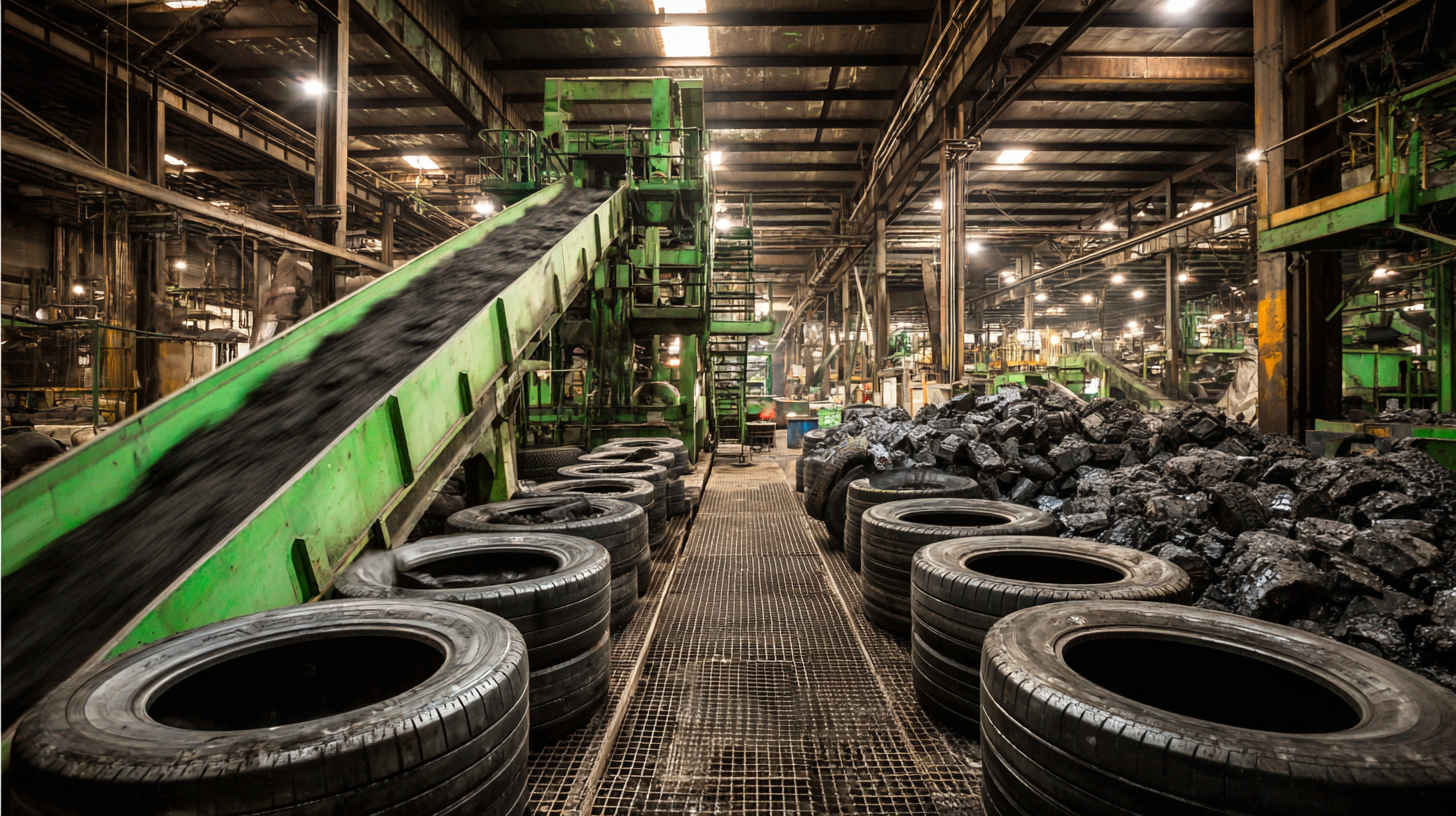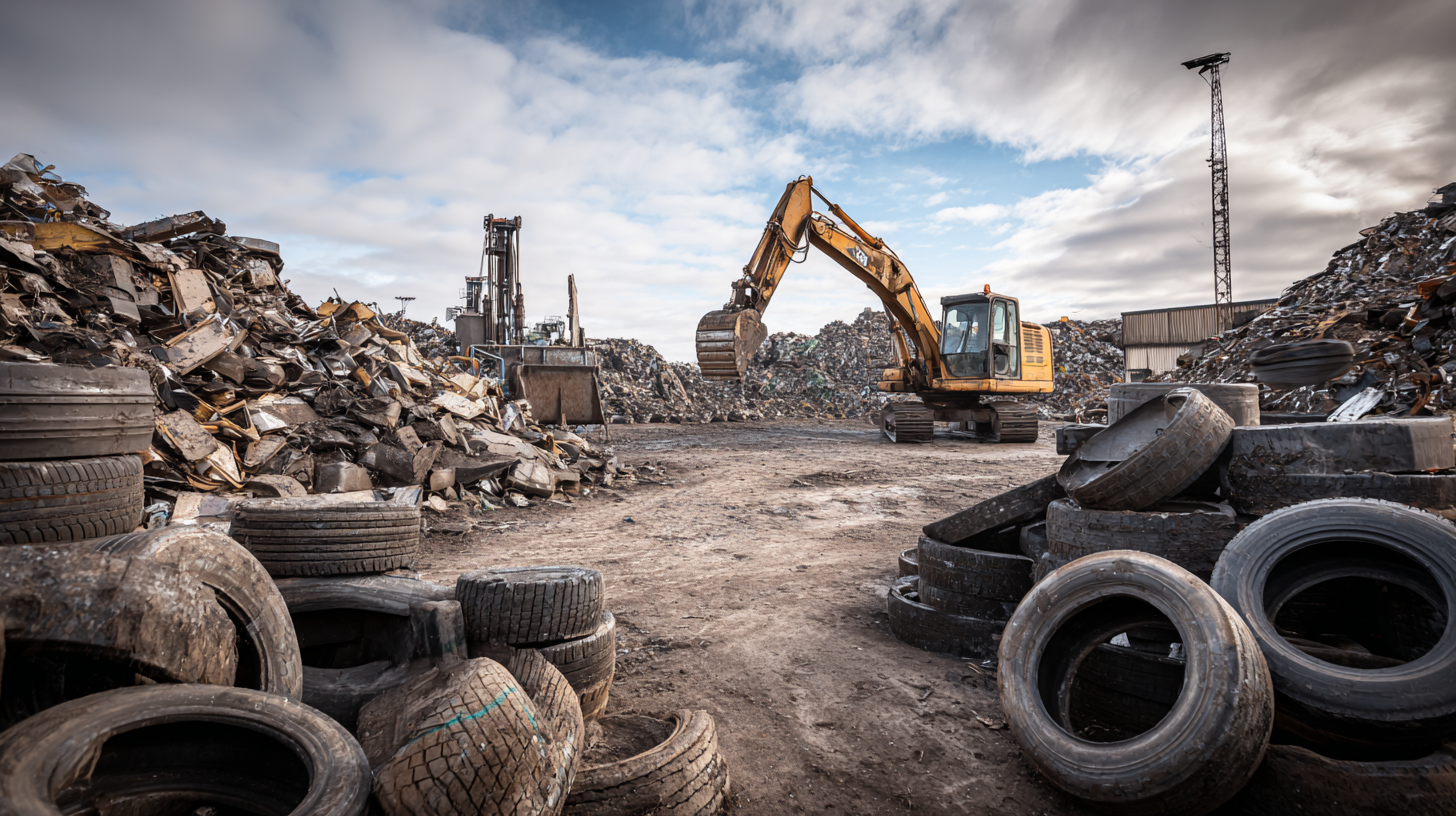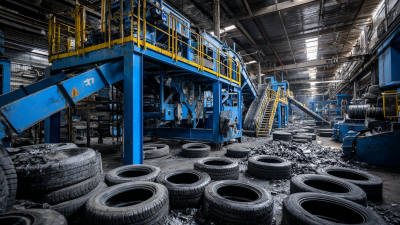In the quest for a sustainable future, optimizing tire shredding processes has become a focal point for recycling efficiency. Tires, composed of various materials, present unique challenges and opportunities within the recycling industry. Effective tire shredding not only enhances the recovery of valuable materials but also minimizes waste and environmental impact. This article delves into the intricacies of tire shredding, exploring methods to streamline processes, improve output quality, and boost overall recycling rates. By examining insights and statistics from the field, we aim to provide actionable recommendations that stakeholders can implement to maximize their tire recycling operations. Understanding the nuances of tire shredding is crucial in developing strategies that facilitate a circular economy and promote responsible management of this ubiquitous material.

When selecting the right tire shredding equipment for recycling purposes, it is crucial to consider several key factors to ensure maximum efficiency. First and foremost, the production capacity of the shredding machine should align with the volume of tires you intend to process. High-capacity machines can handle a larger number of tires simultaneously, reducing processing time and increasing throughput.
 Additionally, the size of the shredded material must be taken into account, as different applications may require varying granule sizes. Choosing equipment with adjustable shredding settings can enhance flexibility and better meet specific recycling needs.
Additionally, the size of the shredded material must be taken into account, as different applications may require varying granule sizes. Choosing equipment with adjustable shredding settings can enhance flexibility and better meet specific recycling needs.
Another important aspect is the technology employed in the shredding process. Opting for state-of-the-art machinery that incorporates advanced features such as noise reduction, energy efficiency, and improved safety mechanisms can lead to a more sustainable operation. For instance, machines that utilize high-torque and low-speed shredding can minimize wear and tear, resulting in lower maintenance costs and longer lifespans.
Furthermore, it is essential to verify the manufacturer's reputation and customer support to ensure reliable performance and assistance when needed, ultimately contributing to a successful tire recycling operation.
The environmental impact of tire recycling is substantial, as discarded tires can pose a serious ecological threat. Approximately 300 million tires are discarded annually in the United States alone, and if not properly managed, these tires lead to significant landfill issues and pollution. The decomposition process can take decades, during which tires can release harmful chemicals into the soil and waterways, making effective recycling efforts critical for environmental health.
Recycling tires offers numerous benefits that highlight its importance. For every million tires recycled, around 7.5 million pounds of carbon dioxide emissions are avoided, significantly contributing to the fight against climate change. Furthermore, recycled tire materials can be repurposed for various applications, such as rubberized asphalt for roads, playground surfaces, and innovative landscaping solutions. Utilizing recycled tires not only reduces waste but also conserves resources, emphasizing the necessity of optimizing tire shredding processes to enhance the overall efficiency of recycling efforts and maximize these environmental benefits.
The tire recycling industry has seen significant advancements with the integration of innovative technologies that enhance shredding processes. Modern machinery equipped with automated sensors and artificial intelligence is revolutionizing how tires are processed. According to a recent industry report by Smithers, the global tire recycling market is expected to reach $3.5 billion by 2026, underscoring the importance of improving efficiency and output quality in this sector. These technologies not only increase the shredding speed but also ensure a finer, more uniform output that meets the rigorous standards set for recycled materials.
**Tip:** Implementing real-time monitoring systems can significantly improve the efficiency of tire shredding operations. By assessing performance data continuously, operators can quickly identify bottlenecks and adjust parameters for optimal output.
Additionally, new pre-treatment technologies, such as microwave heating and cryogenic processing, reduce the energy required for shredding while enhancing the quality of the final product. These methods have shown to increase the yield of rubber crumbs by up to 30%, as reported in a study by the European Tyre Recycling Association. Adopting such innovative techniques not only maximizes recycling efficiency but also minimizes environmental impact, aligning with global sustainability goals.
**Tip:** Collaborating with technology providers to integrate advanced sorting systems can further enhance material recovery rates, ensuring that higher-quality feedstock is obtained for downstream recycling processes.
| Process Stage | Efficiency (%) | Output Quality (Grade) | Average Processing Time (hrs) | Energy Consumption (kWh) |
|---|---|---|---|---|
| Pre-Shredding | 90 | A | 1 | 5 |
| Shredding | 85 | B | 2 | 10 |
| Screening | 92 | A | 0.5 | 3 |
| Granulation | 88 | B | 3 | 7 |
| Final Processing | 95 | A+ | 1.5 | 4 |
Analyzing the cost-effectiveness of various tire shredding methods is crucial for maximizing recycling efficiency. According to a 2021 report from the Recycling Research Institute, the average cost of tire shredding can range from $70 to $150 per ton, depending on the method used. Traditional processes, such as ambient grinding, while popular, may leave up to 30% of the tire material unutilized, impacting overall cost efficiency. In contrast, cryogenic shredding, although initially pricier at around $200 per ton, has been shown to recover up to 95% of the rubber, leading to higher potential revenues from processed materials.
Evaluating the performance and expenses associated with different methods also reveals significant variances in operational efficiency. For instance, a recent study highlighted that the use of advanced shredding technologies can reduce energy consumption by up to 50% compared to older systems. This reduction not only cuts down operational costs but also aligns with sustainability goals, making the investment in modern equipment a wise choice. As the tire recycling industry grows, such insights and statistics will be vital for companies looking to streamline their processes and enhance profitability.

Effective tire shredding plays a pivotal role in enhancing recycling rates, significantly contributing to sustainability goals. By breaking down end-of-life tires into smaller, manageable pieces, this process enables more efficient transportation and processing. Shredded tires can be repurposed into various products, including rubberized asphalt, playground surfaces, and energy generation resources, thereby reducing landfill waste and minimizing environmental impact.
Moreover, optimizing tire shredding operations not only improves material recovery but also enhances the overall efficiency of recycling circuits. Advanced technologies, such as automated sorting systems and state-of-the-art shredding equipment, can increase the yield of reusable materials while decreasing operational costs. By implementing these innovations, recycling facilities can maximize the value extracted from shredded tires, align with circular economy principles, and contribute to broader environmental sustainability initiatives.
This chart illustrates the recycling efficiency measured as a recycling rate percentage before and after the optimization of tire shredding processes. The data indicates a significant improvement in recycling rates due to enhanced procedures, showcasing the potential of implementation of best practices in sustainability efforts.






